Briar day in the life: 12 Weeks old
Our Pitbull, Princess Leia, passed away and we were ready to welcome a new puppy into our pack. We knew we wanted a bigger dog, though I hadn't been sold on an extra big dog before finding out about Swissy’s. The breed fit everything we were hoping for, medium energy, a bully or boxy look, tricolor (a personal favorite), great for a family with kids, short hair to limit grooming needs, and able to last on a weekend hike while still being lazy enough to hang around the house after an hour walk (and note, they do need to be taken on daily long walks). The Greater Swiss Mountain Dog fit that bill!
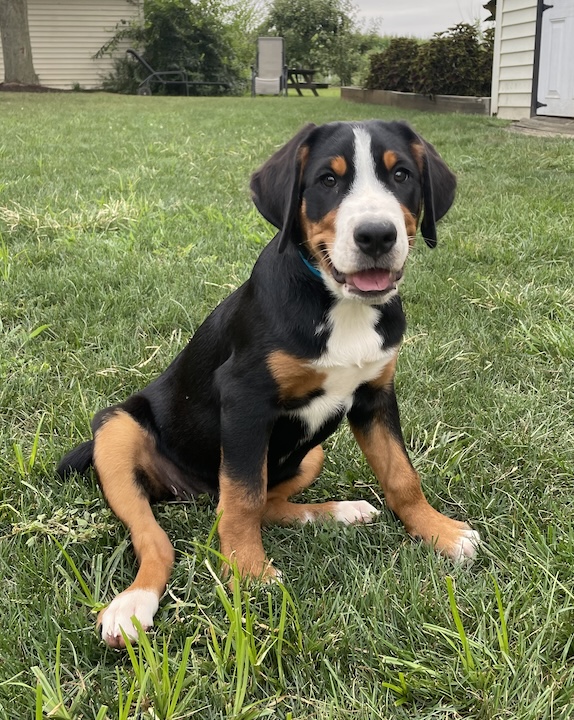
12 weeks old
Meeting Briar, the Greater Swiss Mountain Dog
My husband, toddler, and I went to look at a litter of puppies. Three remained out of a litter of nine. Rather than choose a puppy based on looks, we watched and observed the remaining three puppies as they played with their mom, one another, and the breeder's kids. As a mom of a young toddler, I wanted a puppy that would do well with little hands, not be too pushy or jumpy, but was also not fearful or timid. I wanted a middle of the pack kind of dog.
I had to keep in mind that six litter mates had already found homes and this was not a full pack dynamic. More than likely the extra friendly and playful “front of the line” members had found homes because those puppies are the ones that “choose” their owner by way of their outgoing personalities. Some of the middle pack pups had probably been scooped up as well because of their easy-going and more neutral personalities.
It was clear pretty quickly that two of these puppies were timid and unsure about new people petting them. That’s likely why they were still available. I was nearly unable to pet one litter mate because she kept a few feet between us. However, she was very comfortable with the breeder’s family which tells me she would, in time, accept a new family, but may not always like visitors or change. That’s not a good match when we are hoping to continue to grow our family. A more timid, back of the line puppy can learn to accept change and strangers with the correct socialization and leadership. For our current family dynamic though, I knew I may not be able to give her the calm, consistent environment she needed.
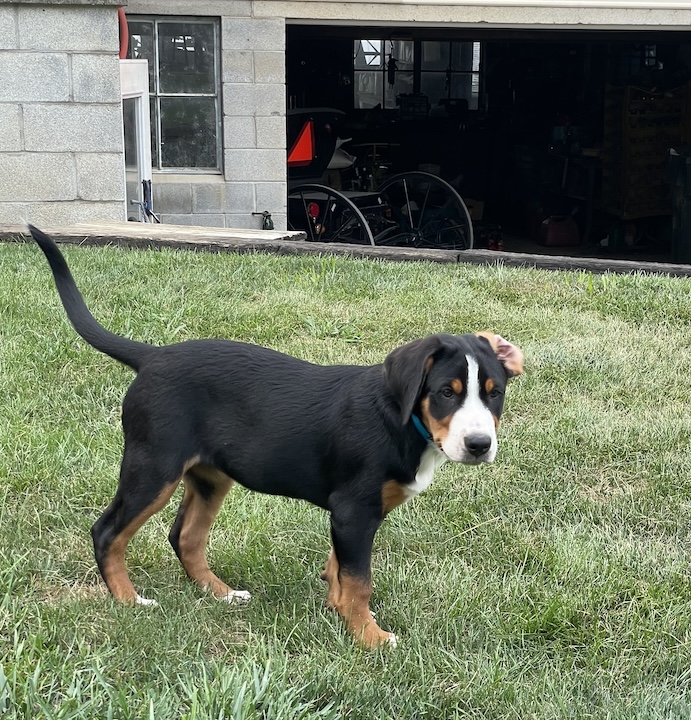
One puppy, the biggest of the remaining 3 would approach me, my husband, and my 16 month old with a calm, quiet, yet friendly demeanor. I kept an eye on her as she played with her litter mates and occasionally came over for pets and to say hi. I honestly didn’t want a bigger Swissy given how big they can get in general, but I knew the disposition of the pup we chose was more important than looks or size.
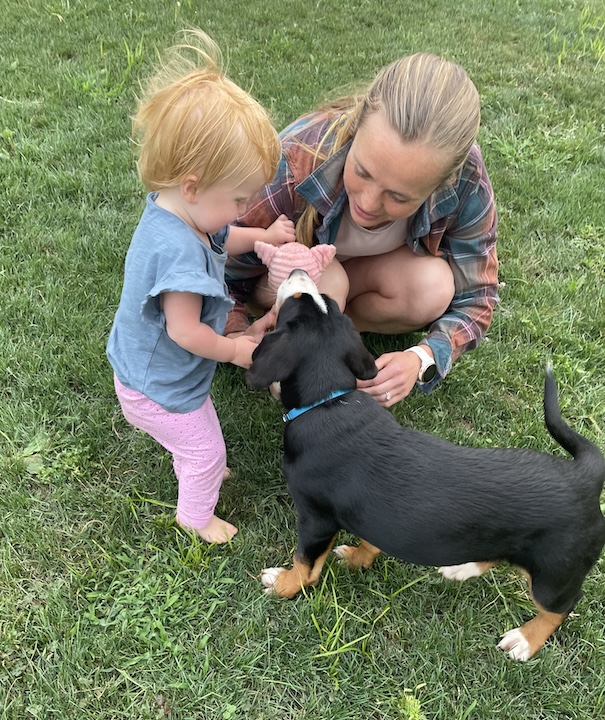
This pup (who we have since named Briar) never once tried to jump and never got too excited where she’d knock my toddler over. She accepted little hands and little squeals with no hesitation. When I picked her up, she melted in my arms and relaxed. No fighting to get down. These were all signs of a middle of the line pup. Exactly what we were hoping for. Briar said goodbye to her mom and littermates to join our family that evening!
She was a little hesitant exploring her new home, but settled in nicely for her first night of sleep.
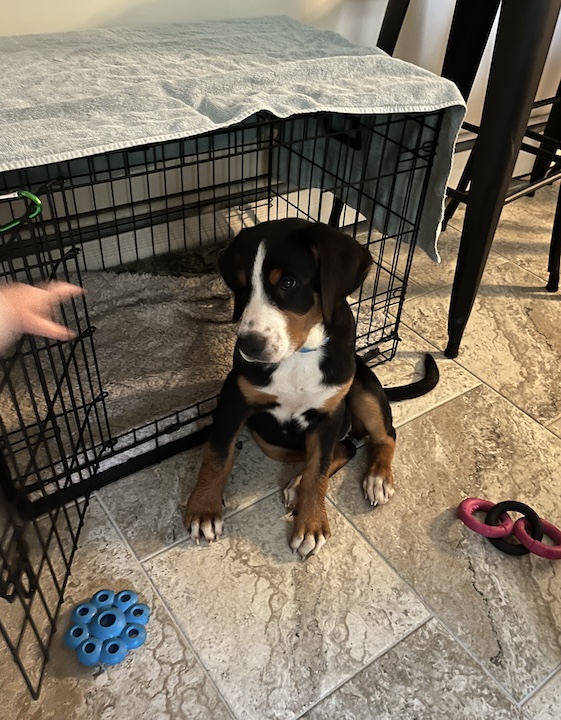
Briar’s first night went smoothly. She didn’t cry through the night and she didn’t have any accidents in her crate! That’s likely from being let out to pee at 3am. It’s important to help a pup learn that outside is for doing business and they won’t ever have to do it inside. To help establish this, I’ll aim to let Briar out about every 2 hours. That doesn’t mean you won't have accidents in the house during the potty training phases, but it can greatly limit them.
Briar needed a new collar, some puppy food, and a few toys so we went for a trip to the local pet store. Briar was calm and content in the shopping cart.
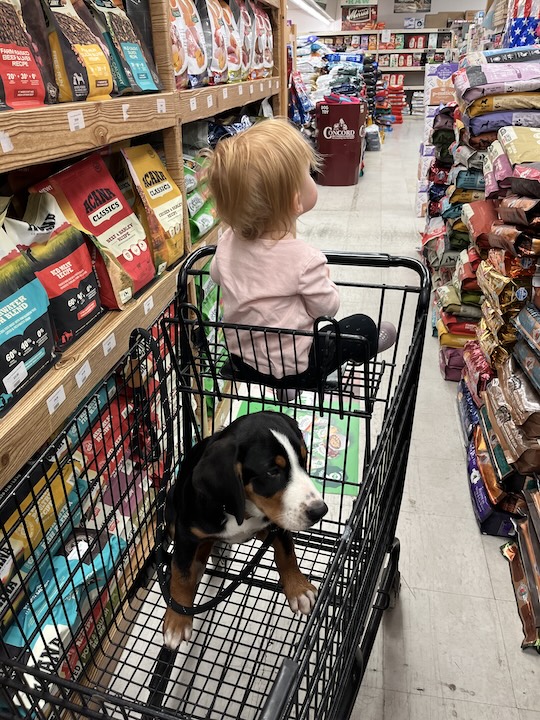
Briar meets the chickens
Our chickens are used to dogs, but more so one dog; our previous blue nose pit-bull, Leia, who had passed away prior to Briar joining our family. Leia and the chickens used to hang out together, exploring and eating grass. The chickens knew Leia was no threat to them, so they were unfazed by a 65lb ball of muscle walking within a foot of them. In fact, the chickens would follow Leia around as she explored the yard!
But Briar was new. She was not the blue bully they trusted. They weren’t taking any chances and immediately retreated to the opposite end of their chicken yard.
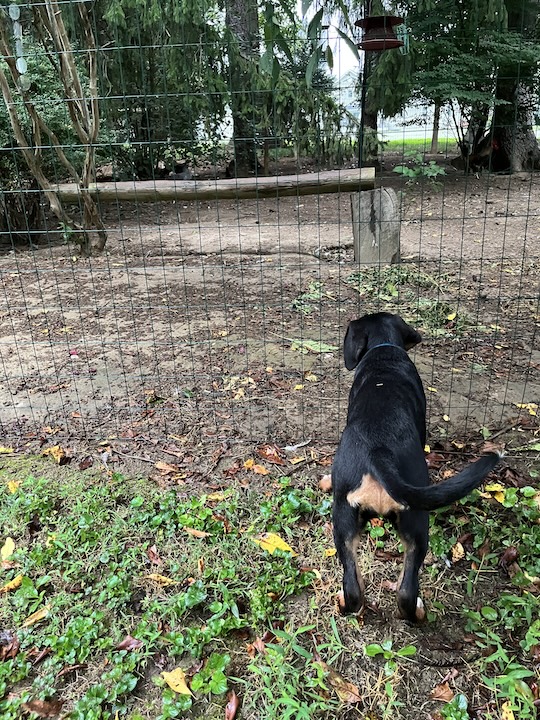
Briar looking on as the chickens alerted of “danger” and took cover. Briar never barked, and only bowed once, which I immediately corrected letting her know that we don’t play with chickens. We only watch them. She seemed to accept these circumstances with ease.
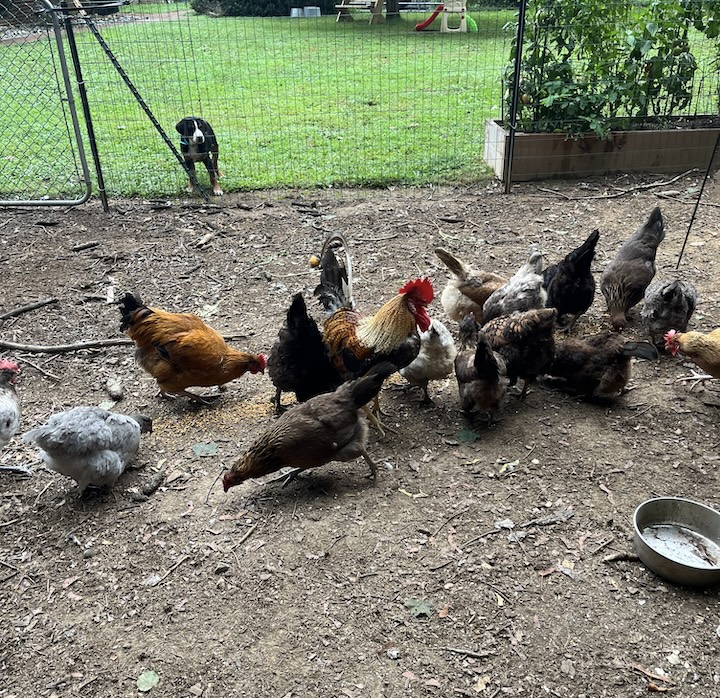
Briar watching the chickens eat some food. Notice her tail is low, head is neutral but curious.
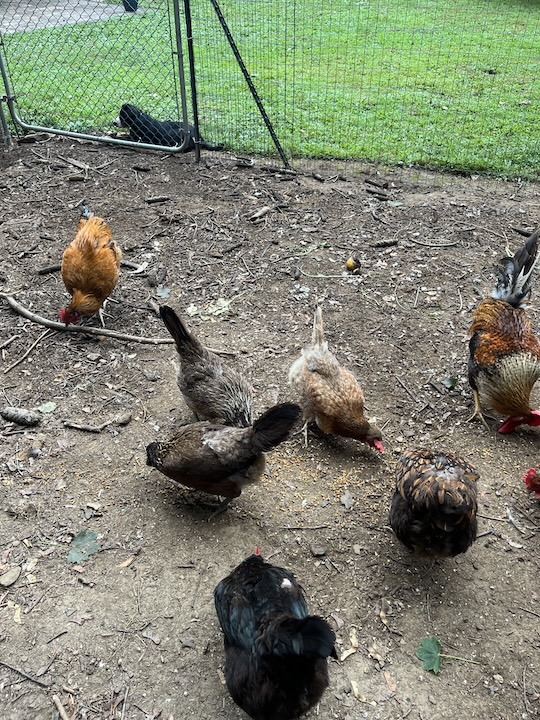
After a few minutes she starts chewing on a stick instead.
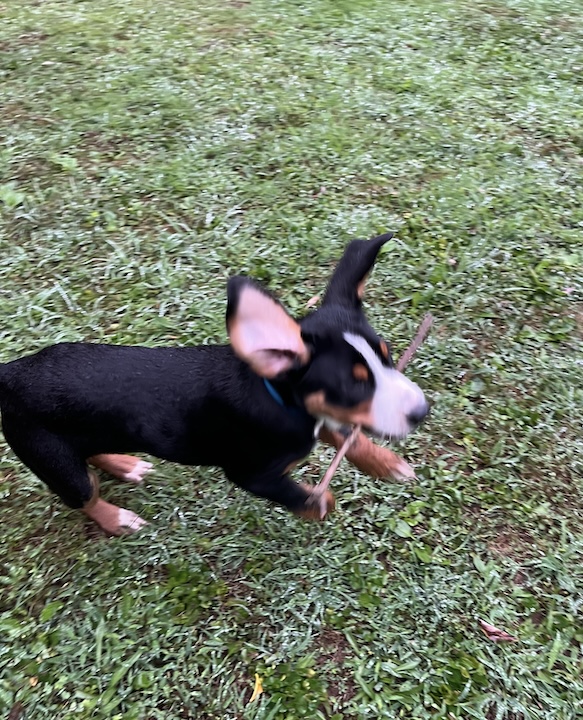
“Woohoo! I love Sticks!”
Briar Learns Some Boundaries
We’ve always had at least one room in the house where dogs were not allowed. This helped to enforce boundaries and limitations, letting our dogs know that we set the rules of the house. We are the pack leaders.
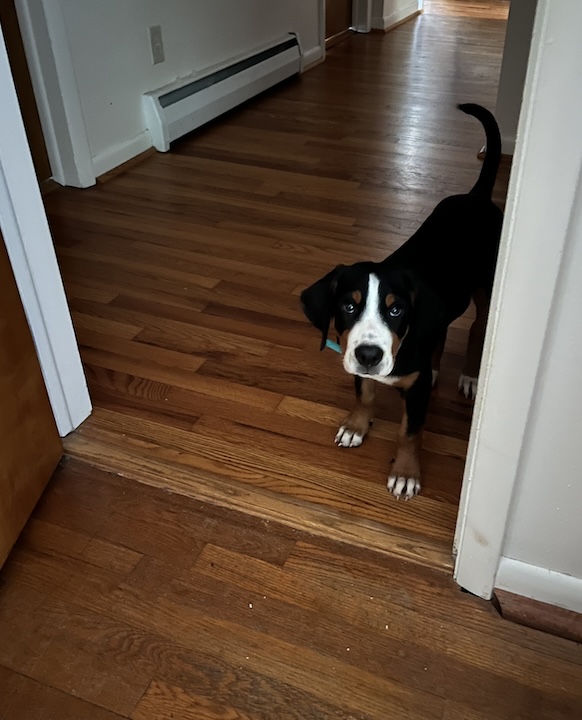
The bedroom is also off limits, sorry Briar.
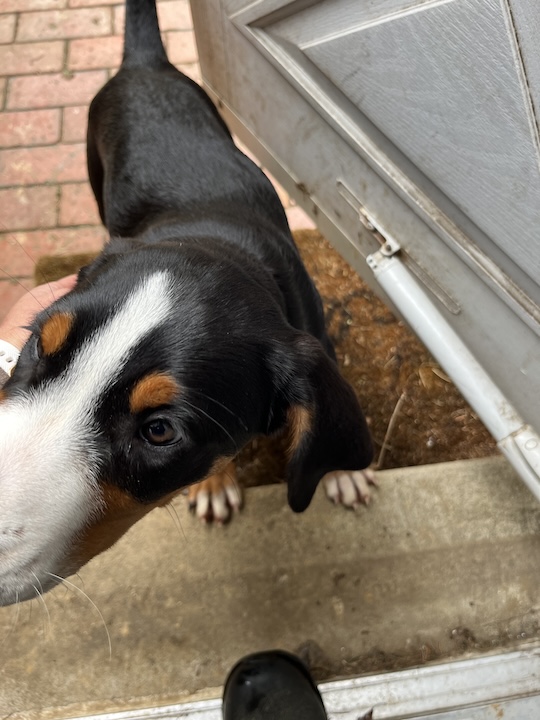
Door manners are really important for not just the safety of young kids getting knocked over, but for the potential chance of your dog bolting out the door and into the street. This will be a work in progress every time we pass through any doorway. As long as she gives me a second or two of waiting I will invite her in. Overtime I will extend the timeframe in which she has to wait to be invited in.
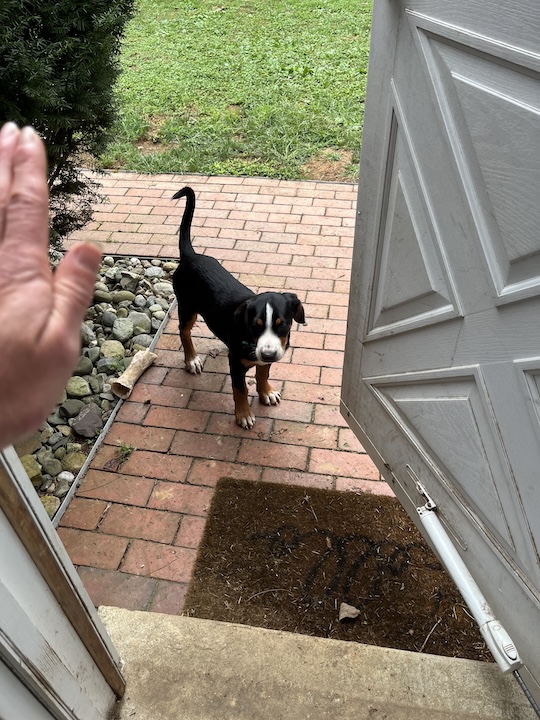
Briar, I’m really sorry but you cannot bolt in or out of the house when there are young kids living here. Especially with how big you're supposed to get! I blocked Briar from bolting into the house, had her step back, and continued to correct her from bolting in again until she got the idea that she was to stand there for a moment before being invited back inside.
In order to have an adult dog who listens, you need to begin teaching them as a puppy.
Briar meets Chewbacca (Chewie), the Olde English Bulldogge
Briar’s first encounter with a dog aside from her mom or littermates was Chewie, the Olde English Bulldogge.
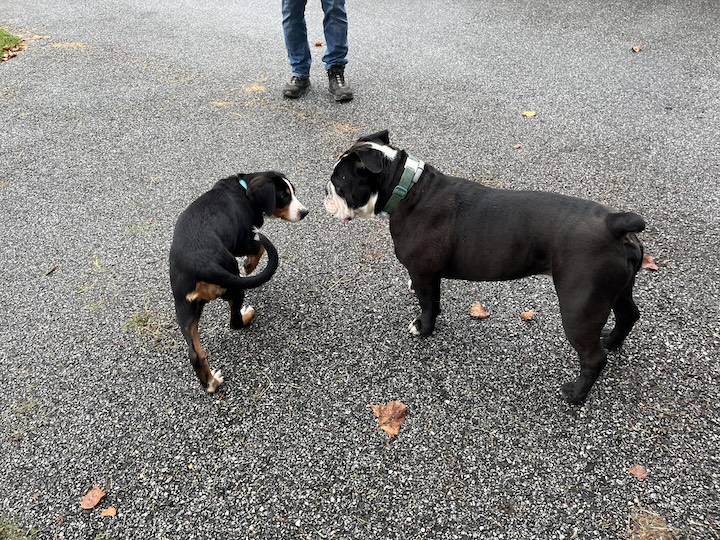
Chewie is a confident happy-go-lucky dog who doesn't know his own size. He was a little too excited for Briar’s comfort, so we did tell him to settle with a quick “ssshht” sound to snap him out of his excited state. Notice Briar has her head and tail lowered indicating she is no threat to anyone, and does not want to be confrontational in any way. She was showing submission.
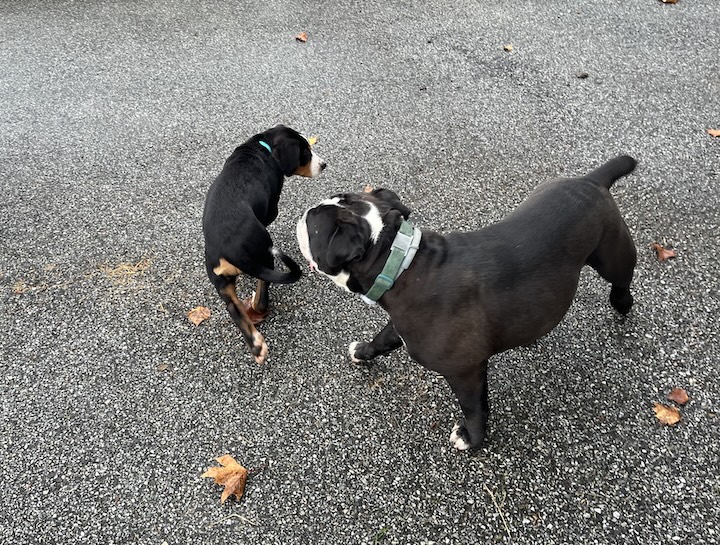
Briar and the slide
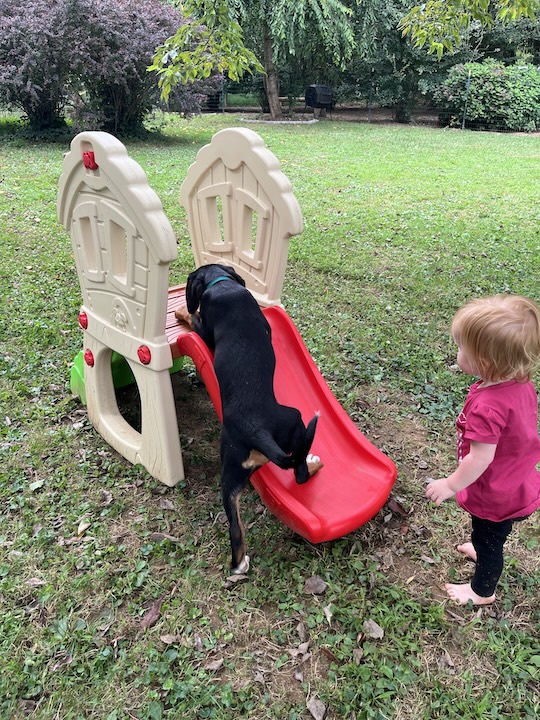
Briar, I’m not so sure you're supposed to go up that side…
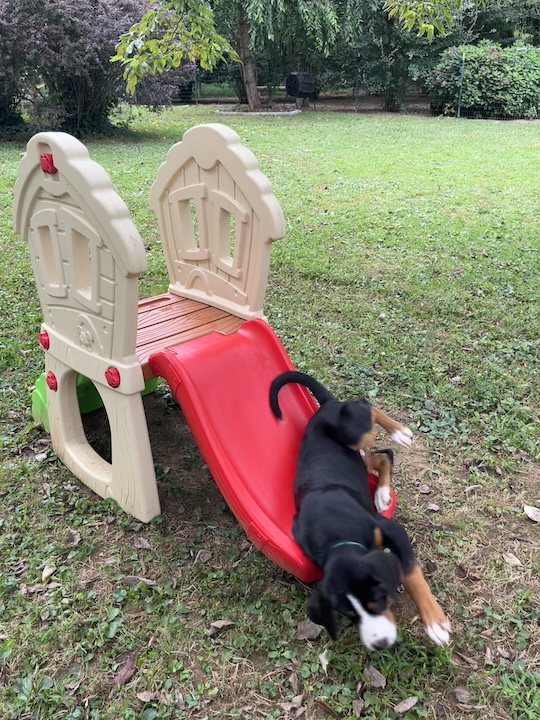
Whoops!
Briar and the pile of sticks
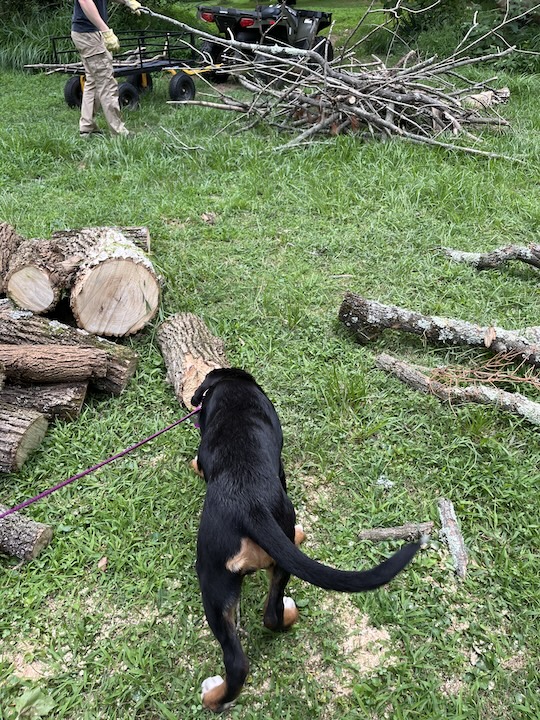
A large tree branch fell in one of the summer storms and it was time to clean it up. Well, Briar wasn’t too sure about that, likely having never seen a huge pile of logs and sticks. A true “watch” dog, she paused and wanted to observe the log pile before getting too close. After some observation and being brought a log for investigation she deemed the scene safe to enter.
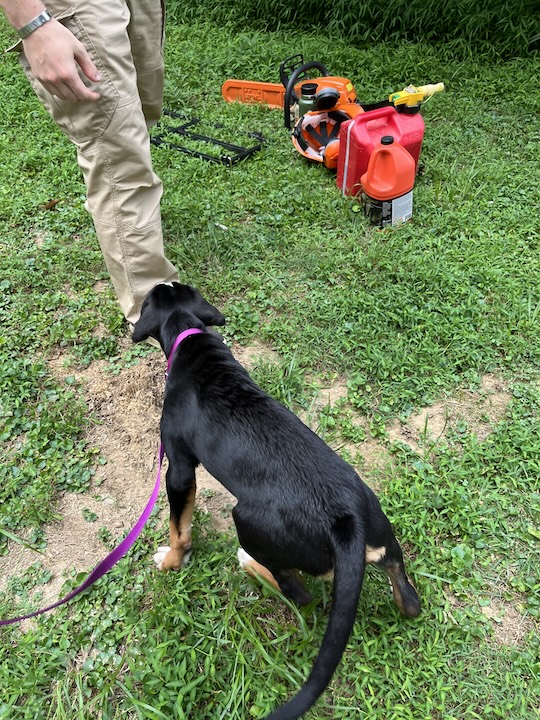
When puppies are learning about the world and seeing things for the first time it’s important to allow them to take their time. They will be watching how you behave and react to the situation so it’s important to stay calm and confident.
Briar at the Playground
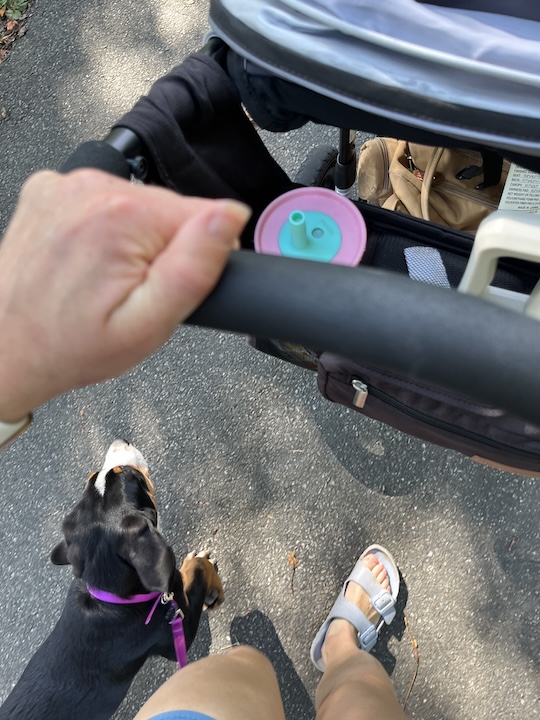
Briar does a great job with leash walks alongside the stroller! Before we visit the playground, I always walk a few laps around the park so our dog, previously Leia, would be calm and okay with standing by the playground. The same routine will be upheld with Briar to ensure she gets the exercise she needs each day.
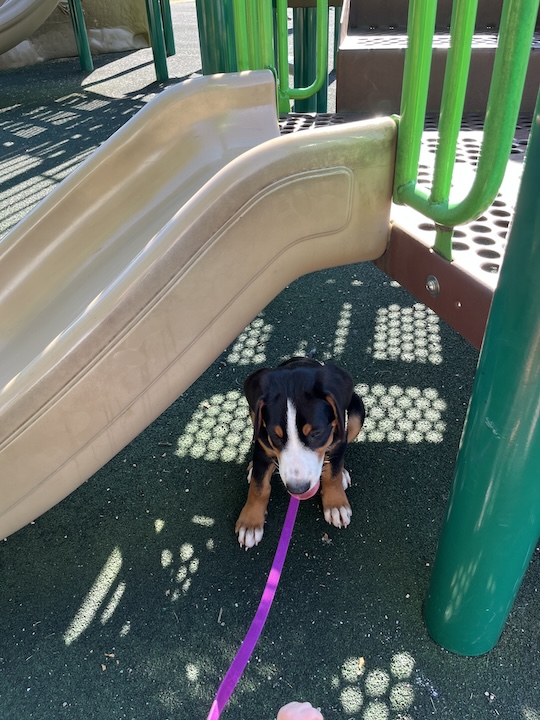
Under the slide seemed like a cool spot to sit
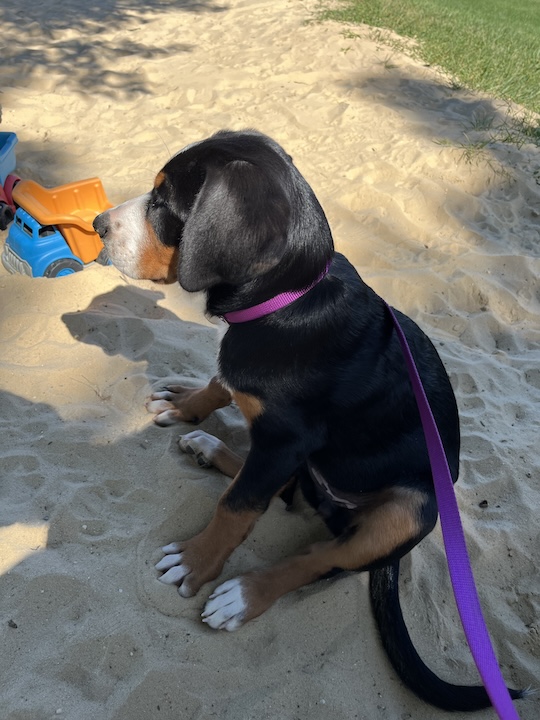
Briar seemed to also enjoy the cool sand from the sandpit.
Greater Swiss Mountain Dog




















